The Definitive Guide to Eyewear Dimensions: How Frame Sizing Impacts Fit, Style, and Wearer Experience
Eyeglass frame measurements are a standardized system that dictates fit and style. The three core numbers—lens width, bridge width, and temple length, always in that order—are measured in millimeters. Understanding these dimensions is crucial for designers to create comfortable, well-proportioned eyewear that avoids common fit issues like sliding, pinching, or causing headaches for the wearer.
Deconstructing the Numbers: A Guide to Frame Anatomy
The “Big Three”: Decoding Core Frame Measurements
Every eyeglass frame has three core measurements that act as a blueprint for its fit. Understanding these numbers transforms you from someone who reads specifications into a professional who can predict how a product will perform. This universal system gives you a consistent language for communicating with suppliers and developing your designs with precision.
- The Standard Sequence: The numbers are always presented in the same order: Lens Width – Bridge Width – Temple Length. When you see “52-18-145,” you know the lens width is 52mm, the bridge is 18mm, and the temple is 145mm. This never changes.
- The Unit of Measure: All frame measurements are in millimeters (mm). This global standard eliminates confusion, which is vital because a difference of just 1-2mm can dramatically change how a frame fits and looks on a person’s face.
- The Location: You will typically find these numbers printed on the inside of a temple arm. This placement keeps the technical data accessible to you while preserving the frame’s outward aesthetic.
Pro Tip: Always photograph these measurements when evaluating successful frames. This creates a powerful reference database for your future design decisions.
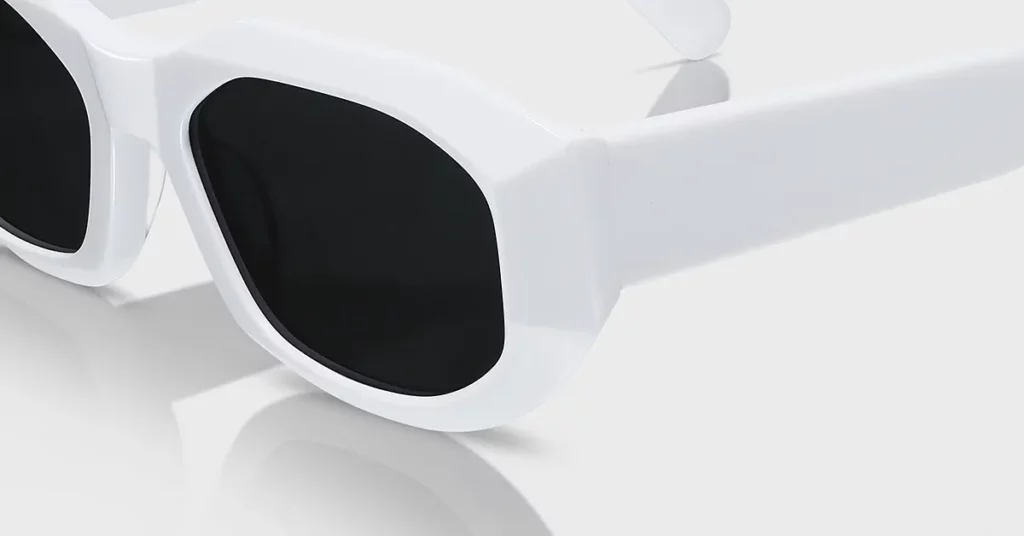
Dimension 1: Lens Width (Eye Size)
What is Lens Width?
The lens width, often called ‘eye size,’ is the horizontal diameter of the lens at its widest point. This means it sets the foundational scale of your design, directly controlling its visual presence on a face. Think of it like the canvas for a painting—a wider canvas creates a bold, statement piece, while a narrower one allows for a more subtle, detailed work.
- Definition: The horizontal diameter of the lens at its widest point, measured using the boxing system.
- Typical Range: 40-60mm, covering everything from narrow, classic styles to oversized, fashion-forward statements.
Impact on Style and Lens Thickness
Your choice of lens width is a primary style driver, but it also has critical optical consequences. For anyone who needs prescription lenses, a wider lens can significantly increase lens thickness and weight, especially for higher prescriptions. This is a crucial trade-off between a fashion-forward look and practical, all-day comfort for the wearer.
Common Mistake: Forgetting that lens thickness increases dramatically with width. For prescriptions above ±6.00 diopters, it’s wise to keep lens widths under 50mm to maintain an acceptable thickness and weight. This constraint should inform your design and target market decisions.
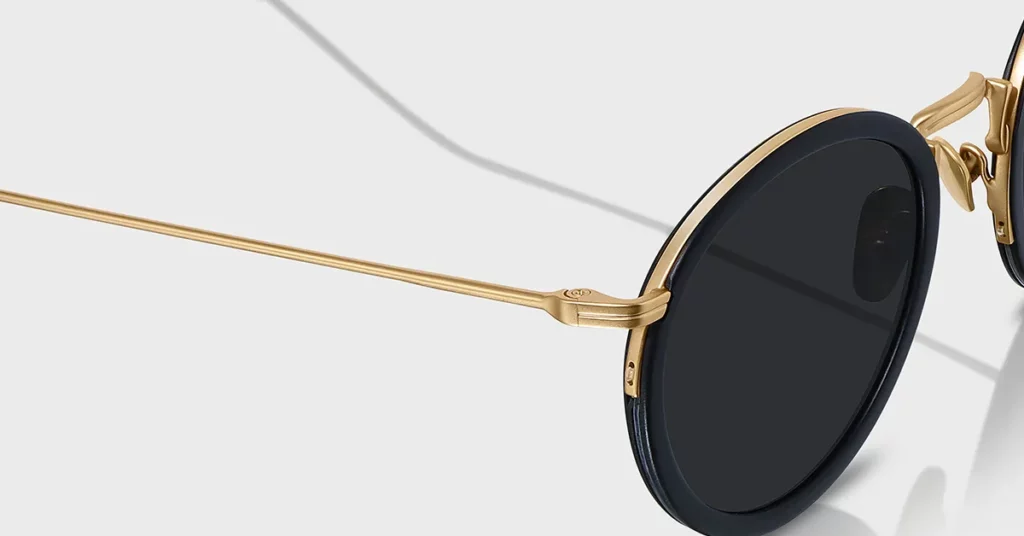
Dimension 2: Bridge Width
What is Bridge Width?
The bridge width is the shortest distance between the two lenses, and it is the single most critical dimension for wearer comfort. This measurement dictates exactly how the frame grips the nose, supporting its entire weight. Think of it like the suspension on a car—if it’s not perfectly calibrated for the road, the entire ride is uncomfortable, no matter how beautiful the car looks.
- Definition: The shortest distance between the two lenses where the frame contacts the nose.
- Typical Range: 14-24mm, accommodating the wide variation in nasal profiles across different populations.
Why Bridge Width is Critical for Comfort
An incorrect bridge width creates immediate, noticeable discomfort that makes a product unwearable. The bridge is the primary anchor point for the entire frame. If it is too wide, gravity pulls the frames down the nose. If it is too narrow, the concentrated pressure creates painful pinch points and red marks.
Pro Tip: Differentiate between a cosmetic bridge and the functional DBL (Distance Between Lenses). Your technical specifications must always refer to the DBL, which is the true contact point, to ensure a proper and comfortable fit for your customers.
Dimension 3: Temple Length
What is Temple Length?
The temple length is the full measurement of the arm from the hinge to its absolute tip. This means its job is to anchor the frame securely to the head, balancing the weight between the nose and the ears. Think of it like a counterweight on a crane—if it isn’t the right length, the entire structure becomes unstable and puts pressure in all the wrong places.
- Definition: The full length of the arm, from the hinge to its very end, including the curve.
- Typical Range: 120-150mm, with most adult frames falling in the 135-145mm range.
How Temple Length Affects Security and Comfort
Proper temple length ensures the frame remains stable during head movements without creating painful pressure points behind the ear. A temple that is too short creates a pinching sensation that intensifies throughout the day. This is a fundamental design flaw that signals a lack of professional execution and will certainly lead to negative reviews.
Critical Warning: Short temples compromise a frame’s stability by relying on excessive pressure rather than proper positioning to stay in place. This dual failure of comfort and function will damage your brand’s reputation.
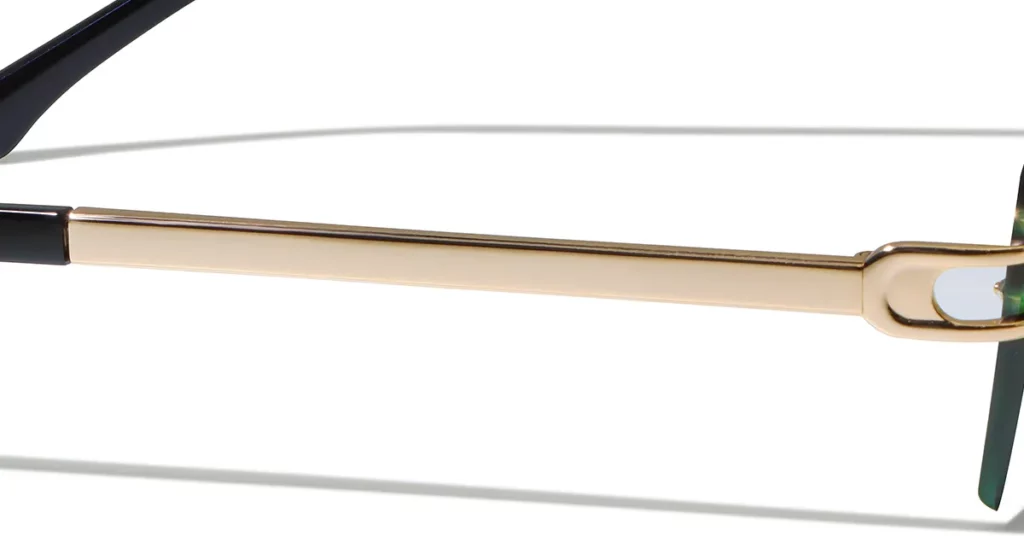
The Fit Blueprint: Preventing Common Failures
Problem: Frames Constantly Slide Down the Nose
This is one of the most common and frustrating fit issues. When frames constantly slip, wearers develop a habit of pushing them up, an annoying ritual that signals poor design. The core cause is almost always a bridge width that is too large, resulting in a complete loss of grip on the wearer’s nose.
- Design Implication: This is a core comfort failure that leads to returns and a negative perception of your brand’s quality.
- Strategic Solution: Prioritize correct bridge specification in your designs. For collections targeting diverse markets, incorporating frames with adjustable nose pads is an excellent strategy to improve fit success across many different facial structures.
Problem: Frames Pinch the Nose or Leave Red Marks
Pinching frames create concentrated pressure points that cause immediate discomfort and leave visible red marks. This is clear evidence of a poor fit. The cause is a bridge width that is too narrow, which concentrates the entire weight of the frame onto two small points instead of distributing it evenly.
- Design Implication: This reflects a poorly engineered product that can cause headaches and wearer fatigue.
- Strategic Solution: Increase the bridge width specification to distribute the frame’s weight across a larger surface area. Remember to test your prototypes across different nose profiles to find the perfect balance between grip and comfort.
Problem: Temples Press into the Head, Causing Headaches
Temple pressure is a serious comfort failure that makes frames unwearable for long periods. This happens when the total frame width is too narrow for the wearer’s head. The temples are forced to stretch outward, creating a constant, clamp-like pressure against the temporal region that leads to tension headaches.
- Design Implication: This is a fundamental mismatch between the product and the target user.
- Strategic Solution: Ensure the total frame width aligns closely with the head width of your target audience. Focus on this specification during the design phase to prevent a major comfort failure.
Problem: Frames Touch the Cheeks When Smiling
This annoying issue becomes apparent during normal social interactions, creating an awkward wearing experience. It is typically caused by excessive lens height or an incorrect pantoscopic tilt, which allows the bottom of the frame to hit the cheeks. For wearers with high cheekbones, this is a deal-breaker.
- Design Implication: This signals a design that fails to account for diverse facial structures.
- Strategic Solution: Introduce “Low Bridge Fit” or “Asian Fit” variations. These designs position the frame higher on the face, providing more cheek clearance and capturing an underserved market segment.
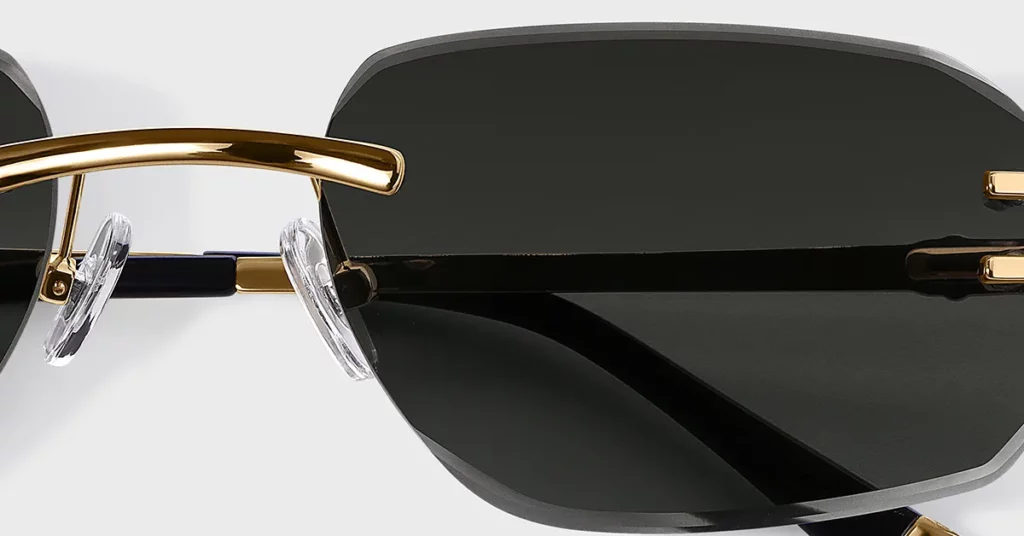
The Style Blueprint: How Dimensions Create Aesthetics
The First Rule: Horizontal Eye Centering
The wearer’s pupils should appear perfectly centered horizontally within the lens opening. This creates a natural visual symmetry and an immediate impression of a high-quality, professional fit. Poor centering is a hallmark of an ill-fitting, amateur product that customers will recognize, even if they don’t know the technical reason why it looks “wrong.”
Pro Tip: Use the “PD Rule of Thumb” as a quick design check. The Frame PD (Lens Width + Bridge Width) should not exceed the wearer’s Pupillary Distance (PD) by more than 4mm to maintain acceptable centering.
The Second Rule: Frame to Face Width Ratio
The total width of the frame should align closely with the width of the face at the temples. A frame that is too narrow makes the head appear wider, while a frame that is too wide creates an unbalanced, “bug-eyed” look. This harmony is essential for creating an accessory that enhances, rather than overwhelms, the wearer’s natural features.
Best Practice: The Total Frame Width is an unwritten but critical specification for your tech pack. Always include it to ensure your manufacturing partners understand the complete dimensional intent of your design.
The Third Rule: Browline Alignment
The top line of the frame should complement the wearer’s eyebrows, not obscure them. Eyebrows are essential for nonverbal communication, and blocking them can interfere with natural facial expression. A design that respects the browline feels more natural and intuitive to the wearer, greatly influencing their subjective feeling of “Does this look right on me?”
For Example: Cat-eye shapes naturally follow and enhance many browlines, while classic aviator styles may require more careful consideration depending on the wearer’s specific facial structure.
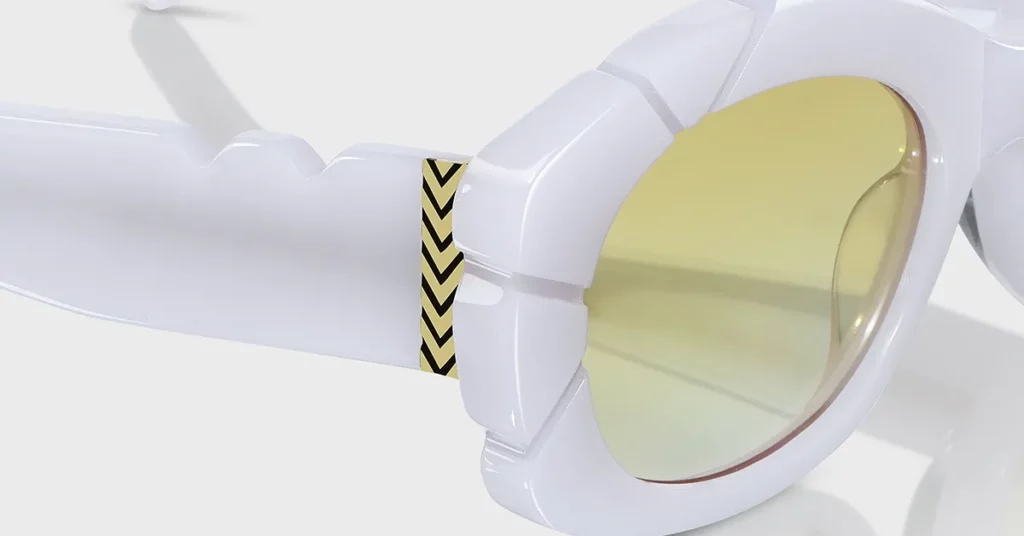
Beyond the Basics: Advanced Sizing Concepts
How Frame Material Affects Sizing
Your choice of material fundamentally changes how a frame fits and feels. Stiff materials like acetate require very precise initial sizing, but they can be heat-adjusted by an optician for a custom fit. Flexible materials like beta-titanium are more forgiving and can adapt to a wider range of head widths from a single SKU.
The Bottom Line: Your material choice can either expand or contract the “ideal fit range” of a single design. This decision has major implications for both your inventory complexity and your ability to successfully fit a diverse customer base.
The Engineering of Vision: Decentration
Decentration occurs when there is a large mismatch between the wearer’s PD and the frame’s PD. This forces the wearer to look through an off-axis part of the lens, which can create distorted vision, eye strain, and headaches. It also results in thicker, heavier, and more expensive lenses for your customer.
Key Metric: Research shows that unwanted prismatic effects from decentration are a widespread problem. Designing frames with proper proportions protects not only the aesthetic but also the optical performance, preventing issues that lead to dissatisfaction.
Sizing for Advanced Lenses: Progressives
Progressive lenses are a lifeline for the massive and growing demographic of presbyopic wearers (typically those over 40). These advanced lenses require a minimum vertical height to fit their different visual zones. Designing a stylish, shallow frame that cannot accommodate them is a costly mistake.
Critical Warning: A minimum “B” measurement (Lens Height) of 30mm is the industry rule of thumb. Frames with a lens height below 28mm are functionally incompatible with progressive lenses, alienating a large and valuable segment of the market.
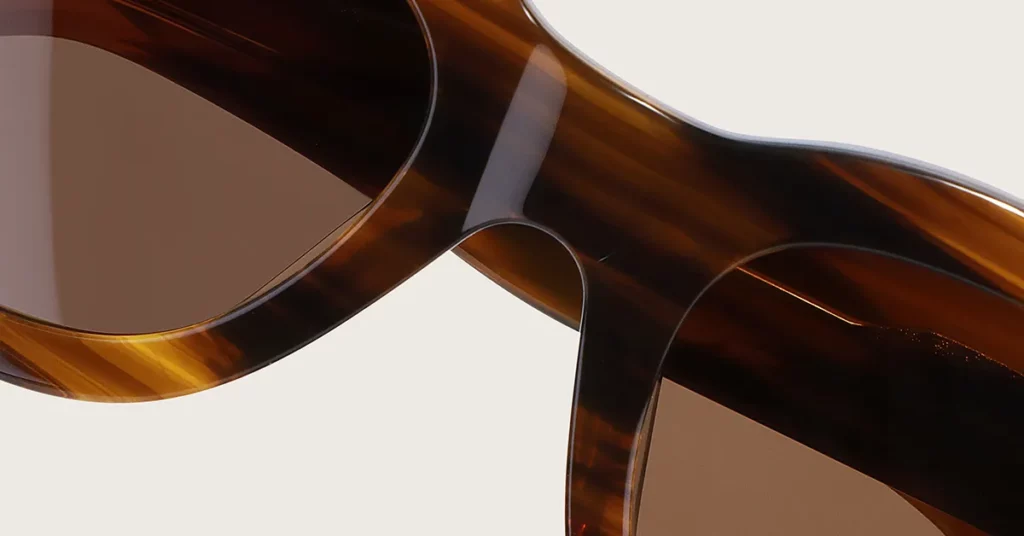
The Professional’s Checklist
Key Questions Before Finalizing a Design
- Who is the target wearer? Consider their likely facial characteristics, including ethnicity and age, which influence measurements for features like nose bridges.
- Does the lens height support progressives? Avoid designing a frame that functionally excludes the large and profitable presbyopic market.
- How will my material choice affect sizing precision? Decide if you need the adjustability of acetate or the forgiveness of a flexible metal.
- Should we offer multiple sizes or a specialized fit? Analyze if the market opportunity justifies the increased operational complexity.
Communicating With Your Manufacturing Partner
- Always provide specifications using the standard Boxing System. This universal language prevents costly misinterpretations.
- Clearly define the “Big Three,” plus Total Frame Width and Lens Height. A complete tech pack leaves no room for incorrect assumptions.
- Request a physical prototype to validate fit and feel. This is the single best way to catch problems before a full production run.
Conclusion
Sizing is the language of design, comfort, and optical performance—not just a set of numbers on a technical drawing. A successful product is born from intentionally matching its dimensions to the target wearer’s real-world experience. Mastering these principles is the first step to avoiding costly mistakes, building a reputable brand, and creating eyewear that people truly love to wear.
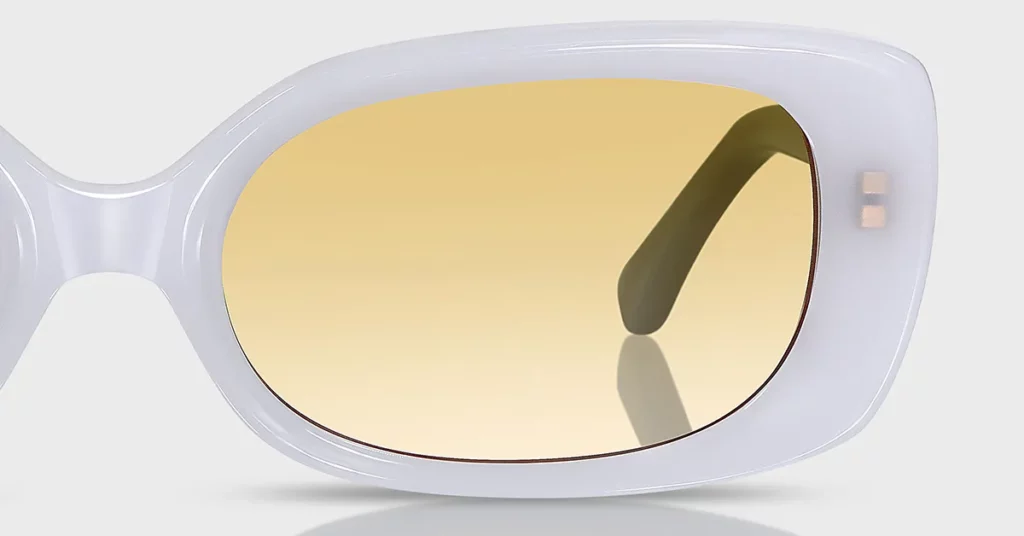
Frequently Asked Questions
1. How much of a difference does 1-2mm make in a frame measurement?
A tiny 1-2mm change can have a major impact. In bridge width, it can be the difference between a secure fit and constant sliding. In temple length, it can create or eliminate a painful pressure point behind the ear, making precision a key factor for comfort.
2. What is the most common sizing mistake new designers make?
New designers often focus on aesthetics while ignoring function. They might design a beautiful frame with a shallow lens height that cannot accommodate progressive lenses, or they fail to consider how a wide lens will create very thick lenses for prescription wearers.
3. Can two frames with the same “three numbers” fit differently?
Absolutely. Factors like frame shape, material flexibility, pantoscopic tilt, and nose pad design can make two frames with identical core measurements fit very differently. You must consider the entire design, not just the three main numbers.
4. What is a “Low Bridge Fit” and who needs it?
A Low Bridge Fit (or Asian Fit) is designed for wearers with a low nose bridge, wider faces, or high cheekbones. It typically features a narrower bridge and larger nose pads to lift the frame, preventing it from sliding down the nose or resting on the cheeks.
5. How much can a frame be adjusted by an optician?
An optician’s ability to adjust a frame depends on the material. Acetate frames can be heated and significantly reshaped for a custom fit. Metal frames also offer good adjustability. However, even a skilled optician cannot fix a fundamental sizing mismatch.